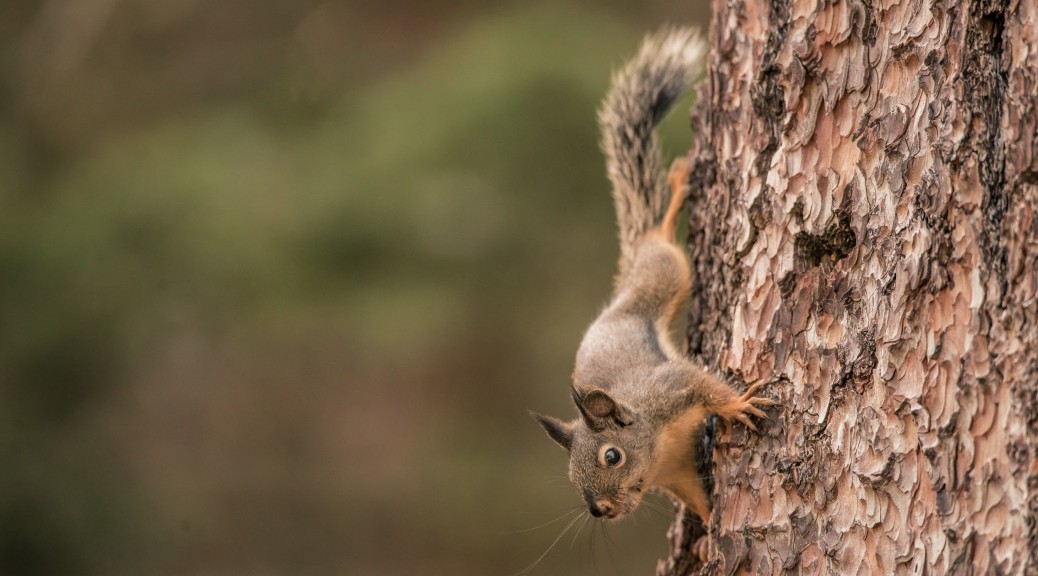They are cute and fluffy, but they’re one of the most common pests in California. Yes, we’re talking about squirrels.
What is a squirrel? Squirrels are small furry mammals that belong to the family Sciuridae, which is part of the rodent order. The squirrel family has over 273 species, but only a few are native to California.
One of the biggest challenges with squirrels is that they can be quite destructive. From fruit trees to plastic containers or piping, squirrels will gnaw at anything, leaving a path of destruction behind them. Another reason not to get too close to squirrels is they carry fleas that can transmit bacteria, which cause diseases.
5 Types of Squirrels in California
There are five types of squirrel species that are native to California. The types you’ll encounter are largely dependent on where you live. So let’s meet the types of squirrels in California.
1. Native Western Gray Squirrels
The native western gray squirrel is a tree squirrel that can be found in most parts of California. It can be distinguished by the predominant gray color of the fur on its sides and back and distinct white underparts. It also has prominent ears. Western gray squirrels are distinguished from their eastern gray counterparts and other squirrel species by their long gray bushy tails with white-frosted outer edges.
Depending on location, the western gray squirrel also goes by other names like Silver-Gray Squirrel, California Gray Squirrel, Oregon Gray Squirrel, Columbian Gray Squirrel, or the Banner-Tail.
Because they’re a shy species, western gray squirrels are more common in the oak woodlands of the foothills and valleys and pine and oak forests. However, it’s not uncommon to encounter them in built-up areas, as they’re losing their natural habitat to fires and urbanization.
2. Eastern Gray Squirrels
Introduced to California from the eastern parts of the United States—hence, the name—eastern gray squirrels can vary in color. While not native to California, this invasive species is a problem, as it can easily out-compete and displace the natives.
Although most have gray coats, some can have a reddish tint. The eastern gray squirrel is medium-sized, has a relatively narrow tail, and features shorter ears than the western gray squirrel.
Eastern gray squirrels are more aggressive than their western cousins. Unlike western gray squirrels that are shy, eastern gray squirrels are bold enough to take over your backyard. Because one of their favorite foods is sunflower seeds, they love patronizing bird feeders. Eastern gray squirrels are among the most destructive squirrel types and must be controlled before they overrun your yard.
3. Eastern Fox Squirrels
Like eastern gray squirrels, the eastern fox squirrel was also introduced from the eastern part of the United States. They have established themselves well in California’s most major cities and are the largest tree squirrels in California. Eastern fox squirrels have many variations of coat colors, but they can be identified by:
- Grizzled yellow-brown (to orange coat)
- Tan (to reddish-brown) underside
- Bright orange-brown ears
Eastern gray squirrels are very athletic and can jump up to 15 feet horizontally. They are also excellent climbers, making it very difficult for homeowners to stop them from accessing the foods they forage for. Eastern fox squirrels thrive around people and, thus, can be found in urbanized areas. Because of this, they’re also one of the most destructive, not to mention the fleas they can pass on to your pets.
4. Native Douglas Squirrels
Sometimes called the chickarees, the native Douglas squirrel is another type of squirrel found in California. Mostly found in the conifer-forested regions of the north coastal area and along the Sierra Nevada Mountain region, native Douglas squirrels are not usually considered pests, but they can be a nuisance to people living in those areas—especially since they can be quite noisy.
One cool fact about the Douglas squirrel is that it changes color depending on the season. In summer, it has a grayish (almost greenish-brown) coat while the belly and chest are pale orange. During winter, the coat changes to become more brown and gray. The ears also have a more tufted look in winter than they do in summer.
An interesting fact about Douglas squirrels is that they like to hoard their food in the same place—for generations. Therefore, it’s common to find piles of discarded pine scales in their habitat.
5. California Ground Squirrel
The California ground squirrel, also known as the Beechey squirrel, is common in California. They are distinguished by their mix of gray, light brown, and dusky fur, which gives their upperparts a mottled appearance. California ground squirrels also have a band of slightly darker fur, flecked with light gray, extending from their heads over the middle of the backs.
An interesting habit that distinguishes ground squirrels from their cousins is that it stores some food in its cheeks to eat later. Ground squirrels are particularly fond of seeds, fruit, and roots, making them a danger to fruit and ornamental plants.
Squirrel Management and Regulations
Despite their being a nuisance, it’s illegal to control squirrels through the use of poison baits. However, of the four main types of squirrels in California, the fox squirrel can be controlled through the use of kill bait. That’s because fox squirrels are a hazard to growing crops.
The best way—and the legal way—to deal with all types of squirrels in California is to use a squirrel removal service. Not only is it the humane thing to do, but it’s also the legal thing to do. You save both your conscience and reputation.
If you’re having squirrel trouble, don’t hesitate to call us at (310) 551-0901. We’ll be more than happy to help get those pesky squirrels out of your home.
